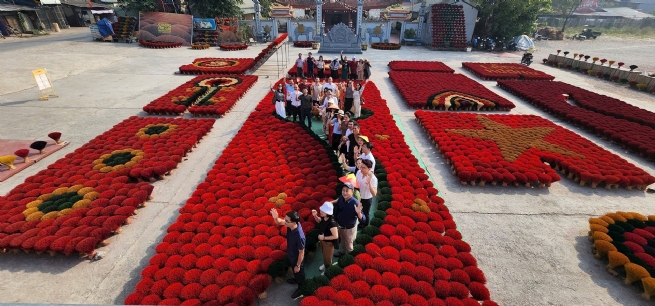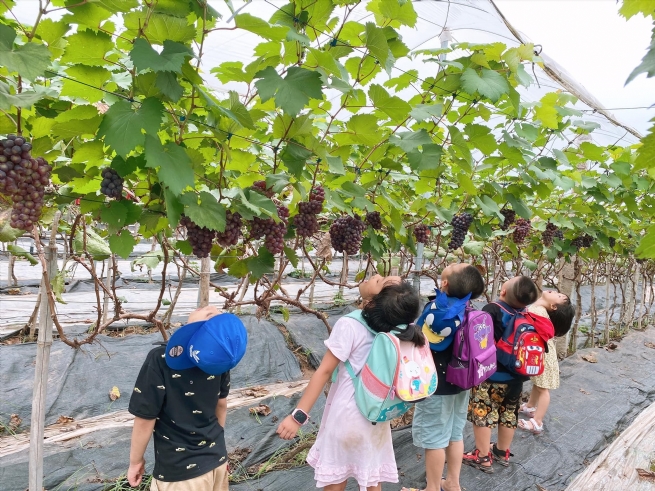Hanoi is home to 337 recognized craft and traditional villages, thousands of historical and cultural relics, and a diverse ecosystem stretching from Ba Vi and Soc Son to Phu Xuyen and Huong Son. The city has all the necessary conditions to develop into a creative rural tourism hub rich in Vietnamese identity.

Under Hanoi’s New Rural Development Program for 2021–2030, rural tourism is steadily becoming a “green pillar” of sustainable development, creating livelihoods for residents while preserving rural culture and the capital’s natural landscape.
Hanoi currently has 11 ecological agricultural farms operating under educational and experiential tourism models, along with 5 specialized cooperatives that integrate education and tourism, including Thanh Xuan Organic Vegetable Cooperative in Soc Son, Duong Lam Vegetable Cooperative, Dong Mo Tourism Service Cooperative in Son Tay, Dong Tien Experiential Cooperative in Ung Hoa, and Hong Van Cooperative in Thuong Tin.
The city has recognized seven rural tourism sites associated with agricultural, rural, craft, and ecological tourism. These include Duong Xa Commune and Phu Dong in Gia Lam, Thuy Ung horn comb village and Van Diem fine woodcraft village in Thuong Tin, Dai Ang and Yen My in Thanh Tri, and Long Ho Hamlet in Kim Son Commune, Son Tay. It has also approved two OCOP-certified four-star community and ecological tourism products: Hong Van Village Tourism Service in Thuong Tin and Phu Dong Green Park Ecological Area in Gia Lam. In addition, other rural tourism destinations have taken shape across the city, such as the Huong Son scenic area in My Duc, Duong Lam Ancient Village in Son Tay, and Ham Lon Mountain in Soc Son.
Agricultural and rural tourism products are increasingly becoming popular destinations, particularly among students and young people. Visitors can enjoy the peaceful rural landscape, take part in agricultural activities, and cook with ingredients they harvest themselves while learning more about farming. Rural tourism is also improving local livelihoods as residents earn income from tourism services.

According to Vu Van Tuyen, Vice Chairman of the Community-based Tourism Association, rural tourism is emerging as one of the key drivers of the national new rural development program, particularly in Hanoi, which harmonizes cultural heritage, natural beauty, and hospitable people. This is a multidimensional development area that not only creates economic value but also preserves heritage, protects the environment, and fosters sustainable communities.
Hanoi’s strengths lie in its rich resources and close proximity to the city center. Many suburban areas are just 20 to 50 kilometers from downtown, making them ideal for weekend retreats. Duong Lam Ancient Village serves as a model of a traditional Vietnamese village, while other rural destinations such as Uoc Le sausage village, Cu Da soy sauce and vinegar village, Chuong conical hat village, Me Linh flower village, and Phu Vinh bamboo weaving village also offer distinctive attractions. The city has additionally developed model tourism sites such as Hong Van Village and Phu Dong Green Park, both recognized as OCOP rural tourism benchmarks. Residents are increasingly active in creating tourism experiences, demonstrating a strong spirit of “self-driven tourism,” which is vital for sustainable development.
However, rural tourism in Hanoi still faces several challenges, including inadequate infrastructure and supporting services, limited human resources and digital marketing skills, and tourism products that lack diversity and depth. Promotion and digitization remain weak, and over-commercialization could risk diminishing the authentic identity of Vietnamese villages.
For rural tourism to evolve into a true economic sector, sustainability must remain the core focus, ensuring environmental, cultural, and community resilience. Tuyen believed that with the right orientation, Hanoi can become the nation’s “Capital of Creative and Sustainable Rural Tourism.”

By 2030, rural tourism will progress beyond simple sightseeing to become a green, smart, and culturally rich ecosystem where visitors can learn Vietnamese cooking, stay in ancient houses in Duong Lam, make pottery in Bat Trang, pick fruit in Dan Phuong, or admire flowers in Me Linh. At that point, rural residents will not merely “do tourism” but live with tourism, creating prosperity from their cultural heritage. Hanoi’s countryside will truly become a livable space where the Vietnamese village identity is renewed in a green, modern, and civilized form.
According to the Hanoi Coordination Office of the New Rural Development Program, the city will continue to promote trade, build OCOP product brands linked to tourism, and develop region-specific tourism products that highlight local cuisine, traditional crafts, and cultural heritage. It also aims to build a civilized and friendly tourism community while strengthening the role of tourism associations and professional organizations in promotion, connection, and service quality enhancement.
By Do Ngoc, Vietnam Business Forum
| This special section is supported by Hanoi Coordination Office of the New Rural Development Program |